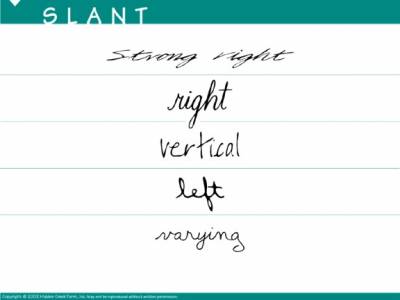"You have a pen in hand but you are showing something of your own character. The very style of one handwriting is an element in the determination of character”. (New York Times, January 23, 1881) While reading a handwritten letter or a text you usually pay attention to WHAT it written. The idea, the theme, the words. But we never (or very rarely) pay attention to HOW it is written. I'm not speaking about the style, about the vocabulary, no. I mean, we don't notice the importance of one's handwriting. We don't care how the letters are written, how big or small they are... But scientists are convinced that the manner of one's writing can reveal one's personality and, analyzing one's handwriting we can get a lot of info about one's character.
The study of handwriting and handwriting analysis is graphology. A person's handwriting - the script - and its placing on the page express the unique impulses of the individual: logically, the brain sends signals along the muscles to the writing implement they control. By examining a handwriting sample, an expert graphologist is able to identify relevant features of the handwritten script, and the way the features interact. The features, and interaction between them, provide the information for the analysis. No single handwriting feature proves anything specific or absolute by itself; a single feature alone can only identify a trend. It is the combination of features, and the interaction between them that enable a full and clear interpretation. But still, there are some basic features that can be readily understood and which give interesting information.
SIZE  Large – a person likes being noticed, stands out in a crowd. Makes an impression, bold, broad perspective, action-oriented, not given to detail, can be egocentric.
Medium – a person is quite adaptable, he/she fits into a crowd. Practical, realistic, balanced, works well with others or by oneself.
Small – introspective, not seeking attention personality. Modest, pays attention to detail, good concentration, humble, may be self-actualized.
Very small – "private” person, stays out of limelight. Introverted, good concentration, precise, low-key, cerebral, can be selective.
SLANT  Strong right – impulsive person, needs to relate to others. Future-directed, needs to be supported by others, spontaneous, demonstrative.
Right – a person is sociable, responsive, interested in others. Good coping ability, extroverted, outgoing, friendly, future directed.
Vertical -practical, independent person. Head rules over heart, controls himself, low emotional response, restrained.
Left – reserved, observant. May be good listener, socially cautious, non-intrusive.
Varying – ambivalent, moods vary. Self-conflict, unpredictable, changing behaviour.
BASELINE  Normally straight – determined, stays on track, self-motivated, reliable, mind controls emotions, steady, unflinching.
Rising – optimistic, upbeat, positive attitude, hopeful, ambitious, emphasizes the positive view, can-do attitude.
Falling – tired or overwhelmed, pessimistic, not feeling hopeful, sees more chances for failures than success.
Erratic – wavering, lacks definite direction, emotionally unsettled, unpredictable, indecisive, may have trouble achieving goals. |












